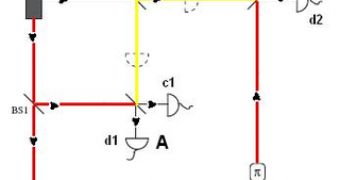Non-locality, says in theory, can't possibly treat separated physical systems as independent. The simplest example of non-locality is a wave. Any object is space must obey the principle of wave-particle duality, therefore all objects in the universe are non-local. Non-locality does not imply the lack of causality, only when information is transmitted between systems, but when information is passed between systems at speeds faster than the speed of light, causality is violated as a result of the Theory of Relativity. Such transfer of information at superluminal rates usually produces causal paradoxes, which imply for example, that it would be possible to 'arrange' for you to be killed, before your grandfather was born.
Causality denotes the relationship between one event, cause, a second event, effect (this being produced as a consequence of the first). This usually means that two particles can have an immediate effect on each other, even when separated by large distances. Information seems to travel between particles at speeds faster than that of light, which is an obvious violation of the laws of causality.
This subject usually causes great debates amongst physicists. Lucien Hardy, proposed in 1994 a modified scheme of the one used in 1991 by Tan, Walls and Collett, but many have said that the scheme was actually detecting a multi-particle effect.
The scheme represented in the image, has been modified by Jacob Dunningham from the University of Leeds and Vlatko Vedral from the University of Leeds and the National University of Singapore, after the Hardy scheme, by eliminating all unphysical inputs, to ensure a single particle exhibits non-locality. This scheme can by applied to single photons, atoms and massive particles. In the experiment, Dunningham showed that superposition and entanglement - two of the mysteries of modern physics - are actually one and the same.
In the original Hardy scheme, one photon arrived at a beam splitter, and two observers, A for Alice and B for Bob, would either measure one of the light beams, or combine them with a coherent light beam and split the result with another beam splitter, and measure the two light beams, homodyne detections.
The decisions of the two observes can result in four possible combinations. First, they measure the original beam from the splitter, and detect one photon. Second, Alice adds a coherent state to her beam, while Bob measures his original Beam, Alice has the chance of detecting a photon at the c1 output, but Bob would not detect a photon; if Alice detects a photon at d1, then so must Bob. The third possibility, switches Alice's and Bob's role. In the fourth possibility, they make homodyne detections.
Dunningham proposes that instead of using a coherent state of a photon and vacuum, they should use mixed states, a blend of coherent states averaged over all phases of the particles, so they don't violate superposition rules. After which the homocyde detection should be ensured by combining the coherent light beam with the original light. By using the same light, they have ensured that the two beams have the same phase, and one detection does not influence the other.
By using a common average phase, but not a specific one, such an experiment could be carried out in a laboratory, and the scheme could be used to verify the non-locality of a massive particle, or a massless photon.

 14 DAY TRIAL //
14 DAY TRIAL //